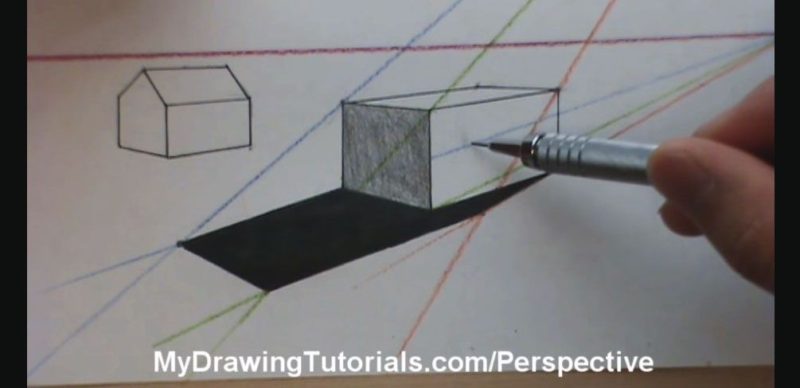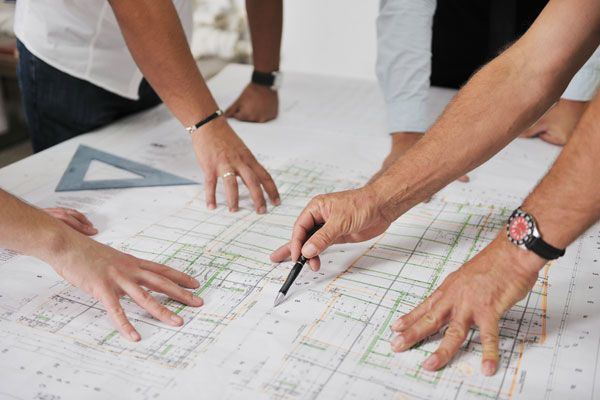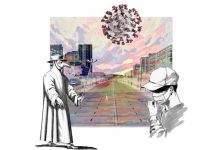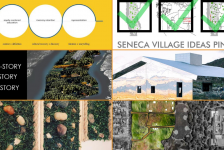Apply these 5 tips to get your head around technical drawing. We all at one point dread the day when our social lives will turn into weekend parties with T-squares and inking pens. Those of us who studied technical drawing look back and cringe at the thought of having to go through that one day-long exam again. But I will quit being so apocalyptic now and tell those who are going to take this course soon that, fortunately, there are several steps you can take to make the best out of your technical drawing class — and even enjoy it!
5 Technical Drawing Tips
1. Ditch the comfort of home for the studio group dynamic Back in high school, I didn’t very much like the idea of studying in a group. It seemed too distracting and like an easy ticket for procrastination. But as soon as you get into design, you realize that things here work differently. The studio experience is especially vital for “first years”, as they are still unfamiliar with the system and with design itself.
In the case of technical drawing projects, working in the studio is not only useful for motivation and building tighter relationships with your classmates, it makes you less prone to making mistakes in your projects. Why? It’s simple — working with other people on similar projects makes it easier to identify mistakes that you might have committed. You will learn from each other and have fun doing it. WATCH: Studio Experience: Architecture + Landscape Architecture
2. Don’t be afraid to say, “I don’t understand. Could you repeat, please?” This doesn’t only apply to technical drawing, of course, but it is particularly true for these kinds of lectures, which can be so overwhelming. The truth is that most instructors I’ve encountered who lecture on technical software or skills are really good at what they teach, and they assume that everyone is able to catch onto it as fast as they do. So they tend to explain it a bit too fast. Don’t be afraid to ask the instructor to repeat things or to go slower, or to schedule individual appointments. Doing so is much easier than going through hell during the assignments or, worse, finding out that you lack some basics during design projects later on. Trust me; I know this, having been through a similar experience in the shades and shadows section. Related Articles:
- Is Drawing Dead?
- How to Suck at Hand Drawings and Still be a Good Landscape Architect
- Interested But Not Confident? – Know How to be Good at Hand Drawings
4. Handle inking carefully Technical inking pens can be such a pain. They are expensive, they come in all kinds of thicknesses, which is confusing at times, and they break easily! And the worst thing is, they can turn a project into an unalterable mess. For this reason, it is always a bad idea to start inking right after finishing a drawing. Take your time to double-check the drawings, possibly with a friend or an instructor, before inking. However, accidents happen sometimes. So in case you dropped some ink on your paper or made a small mistake that you would like to correct, bring a sharp cutter and rub the ink lightly with its side — it will disappear like magic! Although do be careful about dropping blood spots, in that case. 3. Lecturers are not handling it well? Try tutorials OK, so you asked, they repeated, and yet you still didn’t understand it. Maybe they didn’t make the effort you were really expecting to make things clearer. Luckily, today you can find tutorials online for almost ANYTHING (really — even how to darn socks or put the battery in your smartphone). WATCH: Check out this Drawing Tutorial – 2 Point Perspective
Also, don’t forget that YouTube and websites are not the only sources you can use for further explanations. Chances are that the university you study in has a wide range of architectural books on technical drawing. Examples include “Basic Technical Drawings” by Bert Bielefel and Isabella Skiba and “Basic Perspective Drawing: a Visual Approach” by John Montague. WATCH: Check out this tutorial on How To Draw Perspective Shadow – Drawing Shadows In Perspective
5. Work with little models The technical drawing project that I found to be most exciting (yes, contrary to popular belief, technical drawing can be fun at times) was the one in which we had to construct our own Lego model, then draw it in 3D and 2D plans and sections. Visualizing in three dimensions can be hard, which is why creating little models of your assigned drawing with Lego, cardboard, or any other material can make your job so much easier. WATCH: Scale Model Tips – 13 quick tips in less than 3 minutes
On a side note, working with models will also prove to be a great help in later stages in design projects. Also, it’s your one chance to get crazy (a girl I know once made an edible model). Majoring in design, while it is overall a wonderful and enriching experience, can be frustrating at times. But the challenges will become easier once shared with someone who has been through the same experience and once you seek further help. Also, make sure to drop by our page from time to time for inspiration! Recommended Reading:
- Drawing and Designing with Confidence: A Step-by-Step Guide by Mike W. Lin
- Landscape Perspective Drawing by Nicholas T. Dines
Article by Dalia Zein. Return to Homepage
Published in Blog










